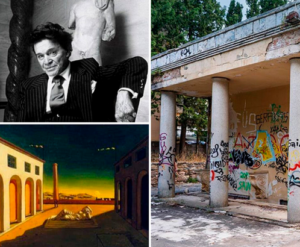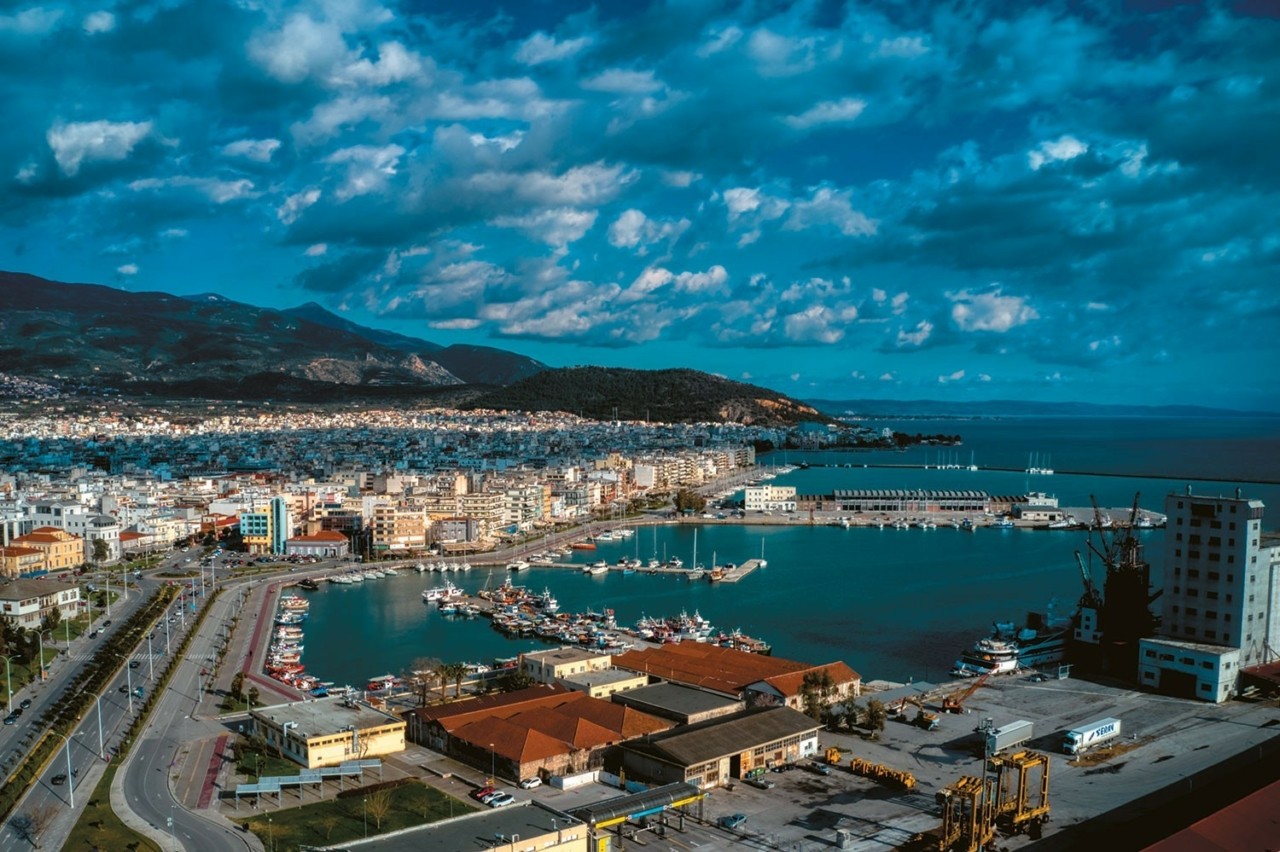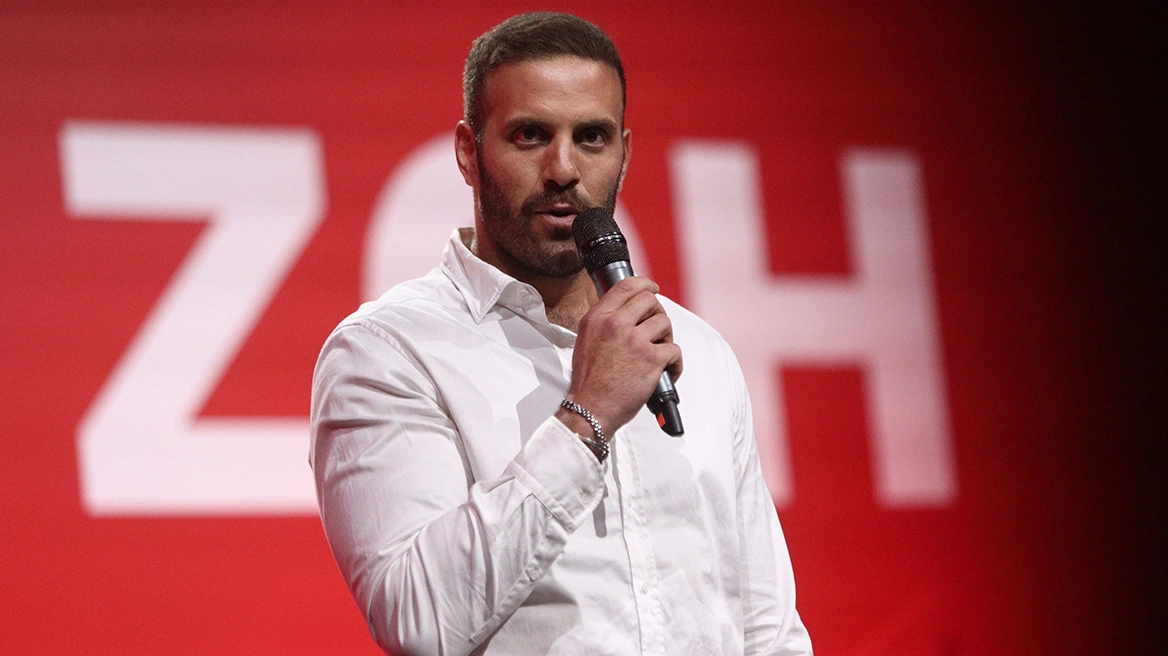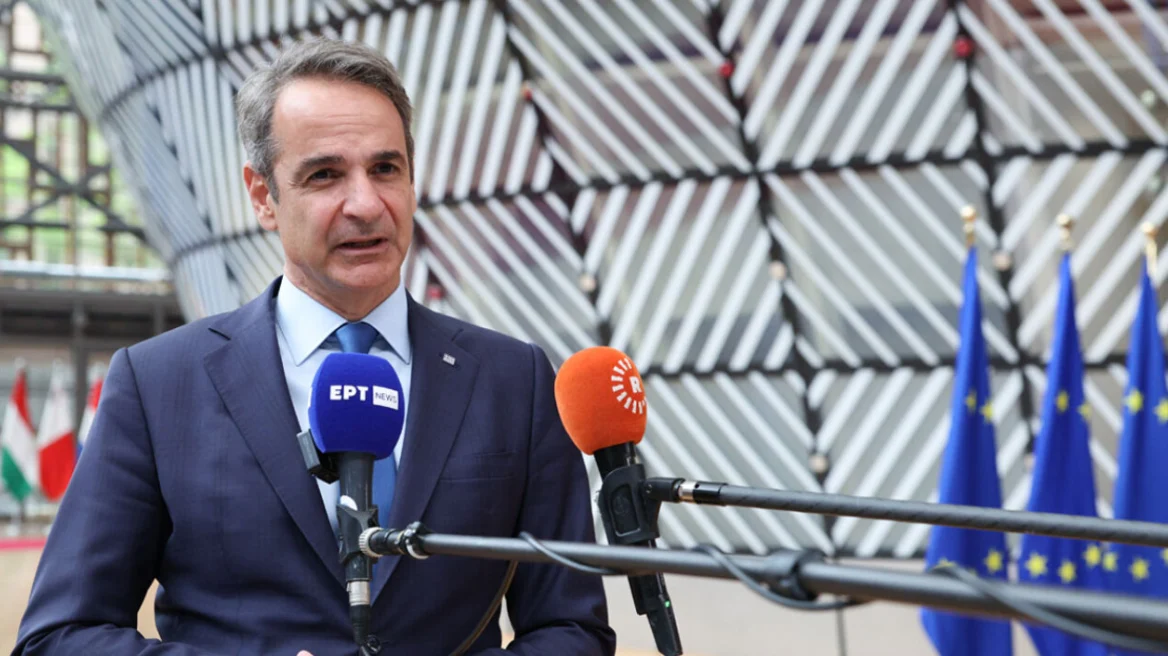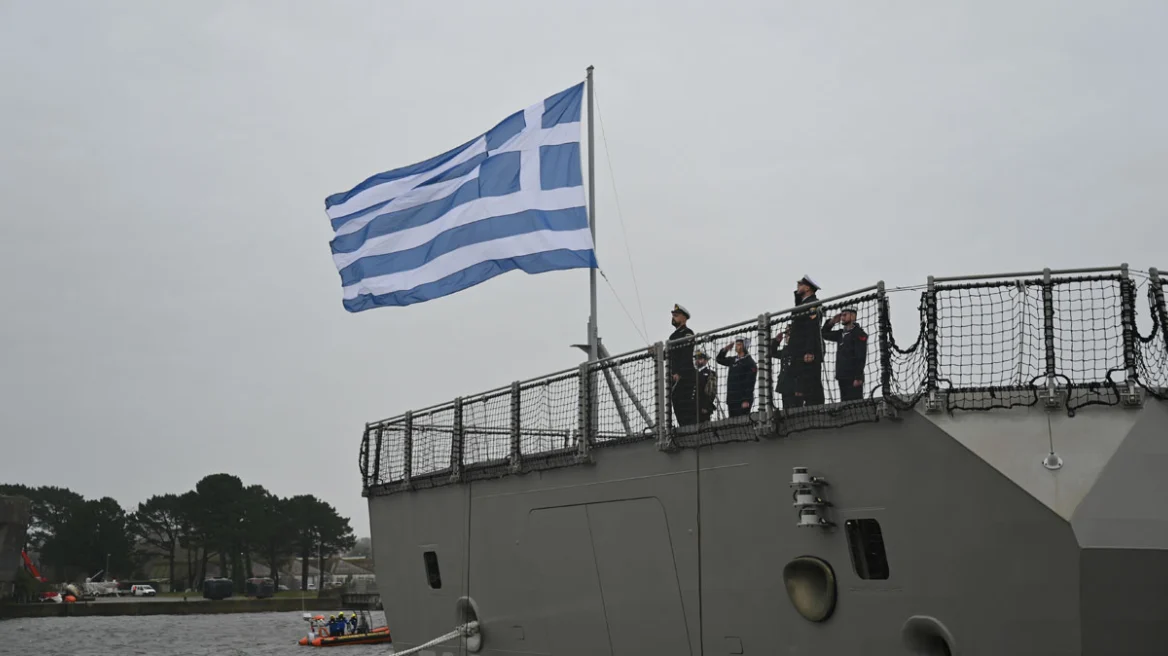In the quiet neighborhood of Kontopefko, in Agia Paraskevi, at the intersections of Demokratias and Chryssostomou Smyrnis streets, an important project has been underway for about two years. Quietly, Villa Iola is attempting to regain its lost grandeur and, finally, to move toward its utilization by the Municipality of Agia Paraskevi, which acquired ownership of the property after many adventures.
This seemingly straightforward project…was delayed by nearly four decades, with devastating consequences for the unique building and the treasures it hid within while Alexandros Iolas was still alive.
Although the timeless adage “better late than never” cannot cover up the flaws, failures, and indifference of the Greek State, the optimistic message at this point is that Villa Iola, with its estate of almost 7 acres surrounding it, now “faces” the future with the aim of transforming it into a museum and a space for multiple cultural activities.
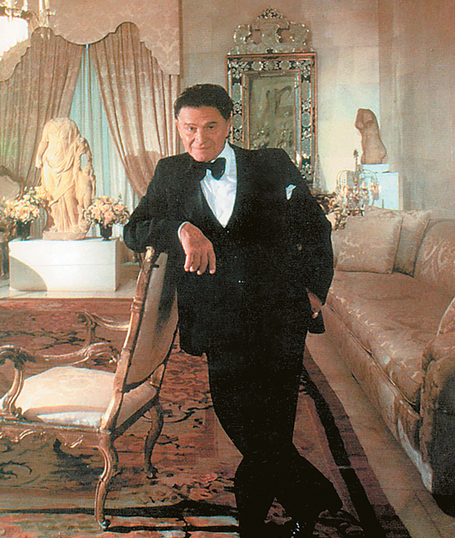
Regarding the critical question of when the complete restoration of the building and the surrounding area will be completed, sources from “THEMA” suggest the end of this year, with a potential completion by early 2026.
Iolas and Art
This near-future prospect of turning the property into a super-local cultural hub also aligns with the vision of Alexandros Iolas himself, who had at one point expressed the desire to bequeath both the villa and his enormous collection of rare works of art and antiquities to the Greek state. However, this wish was never formally written down in an official will, which further complicated the situation.
It was during a time when a toxic climate had developed against him, as he fell victim to a brutal smear campaign, accused of involvement in antiquities trafficking, prostitution, and drug trafficking.
Thus, this Alexandrian patron of modern art passed away a few months later, defeated by AIDS, disgusted by the baseless and unrealistic accusations leveled at him by his self-appointed tormentors.

It was the tragic epilogue, like an ancient tragedy, of a life of epic proportions. It began in 1907 in Alexandria, Egypt, when Konstantinos Koutsoudis, his real name, first saw the light of day. A world that he was destined to conquer with his unique talent and insight.
Although born into a wealthy family of cotton merchants, and despite his father’s repeated attempts to “recruit” him into the family business, he knew from an early age that his true calling was to become a lover of art in all its forms.
In 1928, he spread his wings and moved to Athens, armed with a letter of recommendation from C.P. Cavafy, which was enough to get him into the salons of the intellectuals of the time and to socialize with prominent figures like Angelos Sikelianos, who considered him his teacher, Kostis Palamas, Dimitris Mitropoulos, and others. Encouraged by the latter, and after taking his first steps in dance, he left for Berlin, where he dedicated himself to ballet and became one of the top dancers of that period.
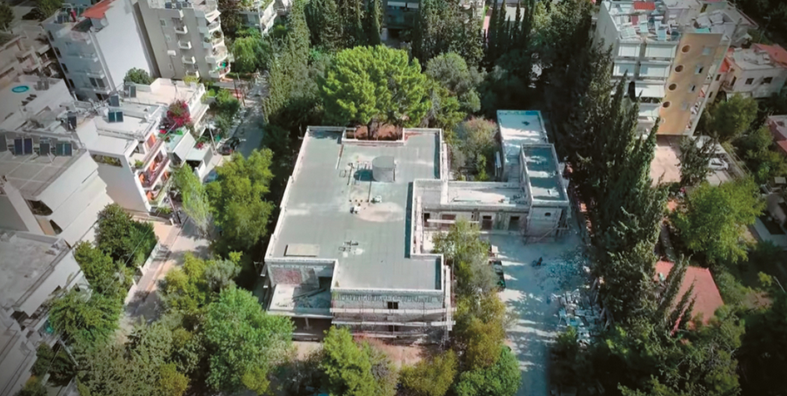
Although America was a decisive stop in the journey of his life, it was Paris that marked his course. Having attended art classes at the Sorbonne a few years before the war, while walking in the Champs-Élysées area, he stopped in front of the window of a small gallery where a painting stood out. It was Melancholia by Giorgio de Chirico, which captivated Iolas’s gaze and became the catalyst for a shift in his artistic direction.
In September 1945, he opened his first gallery in New York, showcasing works by European surrealists such as René Magritte, Max Ernst, de Chirico, and others. This exhibition was a huge success, demonstrating Iolas’s foresight. Shortly after, he “discovered” and promoted Andy Warhol and many other unknown artists at the time, while also giving “international passports” to some of Greece’s greatest artists, such as Chatzikyriakos-Gikas, Moralis, Tsarouchis, Takis, Tsoklis, Akriatakis, Fasianos, and others.
Iolas developed a network of Alexander Iolas Galleries in Geneva, Paris, Milan, Zurich, Madrid, and Rome, while also collaborating with galleries in Greece. Over the years, he amassed a huge personal collection and became one of the most influential figures in the global art world.
The residence-museum in Agia Paraskevi was a place tied to memories from his relatively young age and the Greek summers he spent there.
The original land acquired in the 1950s was 40 acres. The first family house, which was nothing like the later villa, was built there. Iolas lived there with his brother Dimitris Koutsoudis’s family, usually for one or two months each summer.
In another part of the estate, houses were built for his sisters, Nikki Stiefel and Iro Xenakis, while a large part was later donated to the Municipality of Agia Paraskevi with the idea of becoming a square with sculptures. Thus, the Iolas residence retained about 6.5 acres, with olive trees, eucalyptus, and other plants.
Seven extensions were made to the villa between 1959 and 1974 by various architects to reach its current form. However, the defining initial shape of both the property and its surrounding area, with its cobbled pathways, was given by the great Dimitris Pikionis, the man who “conversed” with each stone before placing it on the ground.
Inside, thematic salons were gradually developed — the pink marble room showcasing works by Picasso, the Egyptian, the Greek with rare antiquities, the Byzantine with icons and religious artifacts — all interconnected with other spaces through golden-leafed doors crafted by Ioannis Kardamas.
The second floor was added under the responsibility of architect Emmanouil Karantinos with the goal of creating a large exhibition space, two bedrooms, and the iconic marble library, with a table created by the legendary Italian sculptor Novello Finoti. The final addition came in 1974 to accommodate a massive work by Chilean artist Roberto Matta.
Thus, the villa reached 1,751 square meters, but the changes continued until the end, as internal rearrangements and redesigns, depending on the art pieces, became a constant creative challenge for the iconic collector.
In 1976, with the death of Max Ernst, Iolas closed his galleries, as he had promised his close friend, and began seriously thinking about settling permanently in Greece. This came shortly afterward when he left the glamorous life and noisy parties of New York and London to return to his personal retreat, bringing with him his unique collection of 10,000 artworks and rare objects.
The Defamation
However, when the wave of defamation against him began to spread, the spotlight faded, and he became almost isolated. Weakened, he left the villa and Greece, and on June 8, 1987, the man for whom Ernst had said, “He could go against the angry oceans,” succumbed to the power of the “disease of the century” in a New York hospital.
In the absence of a will, his heirs became his sister Nikki Stiefel and his niece Eleni Koutsoudi-Iolas. The two sides could not agree, and the process lasted for 10 years. During this period, the villa remained unguarded and suffered an unprecedented looting, with successive “removals” of items, as well as thefts. Stiefel was accused of the illegal export of many of Iolas’s treasures abroad, but the criminal prosecution ceased with her death.
Meanwhile, the property and estate were sold to contractor Spyros Georgiou, who purchased it with the intention of returning the villa to the municipality, on the condition that he would be allowed to utilize part of the land.
The Vision
Since then, for 15 years, the case became entangled in the courts and the gears of bureaucracy, while the villa was left to the ravages of time and the desires of vandals and thieves. Its later image, empty of the masterpieces it once hosted, except for those items that could not be “taken,” like the marble tables and an 800-kilogram work by Takis, with graffiti on the walls, damaged, dark, and dirty spaces, bore no resemblance to its former gleaming past.
Regarding the Municipality of Agia Paraskevi’s goal to transform the Iolas villa into a museum and space for multiple cultural activities, Mayor Giannis Mylonakis spoke to “THEMA.”
As he states, “As part of the priority we are giving as a new municipal administration to enhance the cultural identity of our city, we aim to utilize and upgrade our properties to highlight them as cultural landmarks, which will serve as a magnet for visitors from all over Attica. One of these is the Iolas Villa, where restoration work is currently underway to function as a museum and space for multiple cultural activities.”
Mr. Mylonakis emphasizes that “this is a property for which our municipality spent considerable funds, so it is crucial for us that it is utilized in a way that will be sustainable, beneficial to the municipality, and contribute to upgrading the city’s cultural offerings.” The Mayor also recently met with the Minister of Culture, Lina Mendoni, “with whom we agreed on launching joint collaborations and outreach actions, with collaborations with other museums, organizations, and foundations in Attica that have already expressed their willingness to contribute.” This, he believes, will “give our city a lasting and recognizable cultural identity, and culture will emerge as one of the key comparative advantages of Agia Paraskevi.”
The chronology of the property acquisition by the Municipality of Agia Paraskevi was described, speaking to “THEMA”, by the Deputy Mayor for the Utilization and Management of Municipal Property, Sotiris Papamichail:
“The effort to acquire began in 1997 during the mayoralty of the late Stavros Kotsis. The designation of Alexander Iolas’s residence as a historical listed modern monument was made in August 1998, when Evangelos Venizelos was the Minister of Culture.
In April 2001, during the mayoralty of V. Giannakopoulos, the Municipal Council made the decision for the expropriation of the property from the Ministry of Culture within the framework of the Cultural Olympiad (2000-2004), which was declared in October 2002, with a public expenditure of 9 million euros (during the tenure of Evangelos Venizelos at the Ministry of Culture), but later, in August 2004, it was revoked.
In the summer of 2007, it was approved by the Ministry of Culture, during the tenure of George Voulgarakis, the direct purchase of the property with public expenditure of 9 million euros, which was not completed.
In 2017, during the mayoralty of I. Stathopoulos, the Municipal Council made the decision for a direct purchase by the Municipality of Agia Paraskevi for the sum of 3 million euros in 6 annual installments, which was completed, and so the property was definitively transferred to the ownership of the municipality in December 2022,” he pointed out.
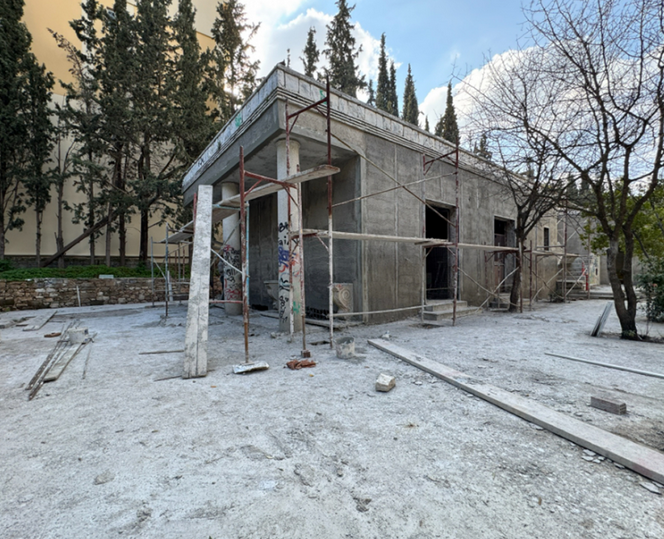
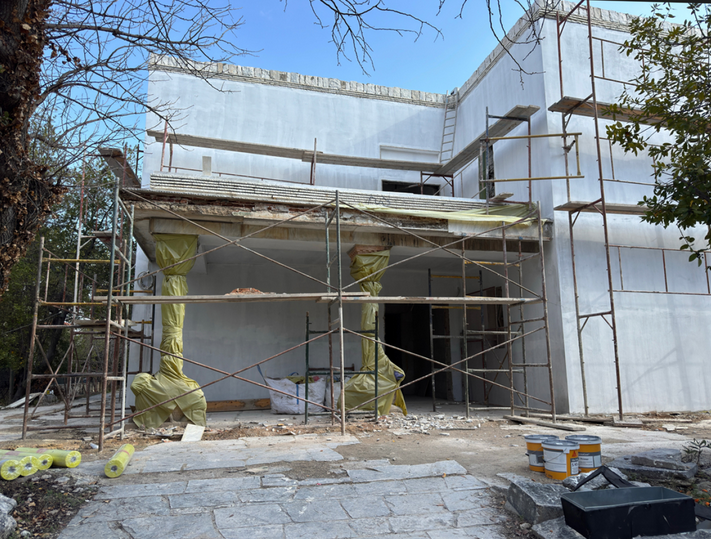
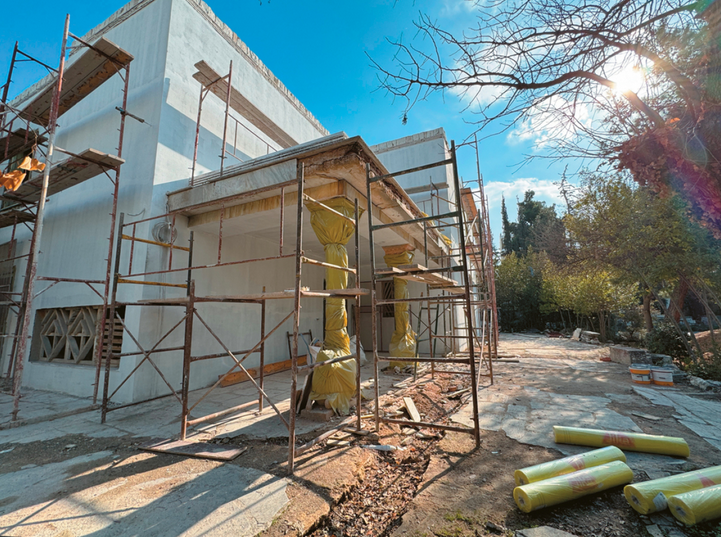

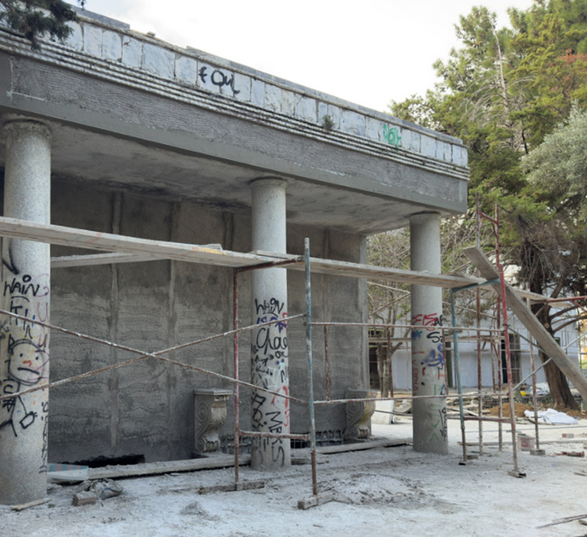
The layout
It should be noted that in 2018, the study titled “Creative Reuse of Iolas’ Property” was included in the ESPA program, with the Municipality of Agia Paraskevi as the implementing agency.
The main goal, according to the study, is to maintain the existing form of the building (division into rooms) in the spirit of a modern art museum. The arrangement of the nine rooms on the ground floor will offer a circular flow for visitors. The dining room, with the marble table, will be transformed into a meeting and conference room. Iolas’ bedroom, next to the main entrance, will host office spaces, while in the addition on the eastern side of the building, in the kitchen area and in Iolas’ newer bedroom, a lounge/cafeteria will be created to serve visitors.
On the upper floor, the large room, where the work of Takis was also located, will be converted into a multipurpose room (theater, cinema, events). The library space will be preserved with the same use, while on the upper floor of the addition, two small guesthouses for artists will be created.
As emphasized, the interventions must not alter the building’s external facades or the interior decoration (marble finishes), and the garden equipment elements (tables, seating, etc.) will be preserved and maintained.
In March 2023, during the tenure of the previous Mayor Vasilis Zorbas, a contract was signed between the Municipality of Agia Paraskevi and the company “Stathis Kokkini Technology 2020 S.A.” for the execution of works related to the creative reuse of the property.
Nearly two years later, the works are in full progress; however, the project is challenging due to the property’s unique characteristics, arising from successive extensions over various periods. Thus, in addition to the complete renovation, during which everything has been removed, it is necessary to address other issues.
Currently, the part concerning structural reinforcements is being completed, and electrical and architectural works will follow.
As emphasized by sources from the Municipality, the goal is to incorporate digital technology into the property’s operation as well as to highlight and make use of the surrounding space.
Regarding the project budget, it amounts to 4.2 million euros, with funding secured from the Antonis Tritsis Program and the EPANEK.
According to the timeline, the Villa Iolas, in its new form, is expected to open its doors to the public towards the end of the year or early the following year.
Ask me anything
Explore related questions
